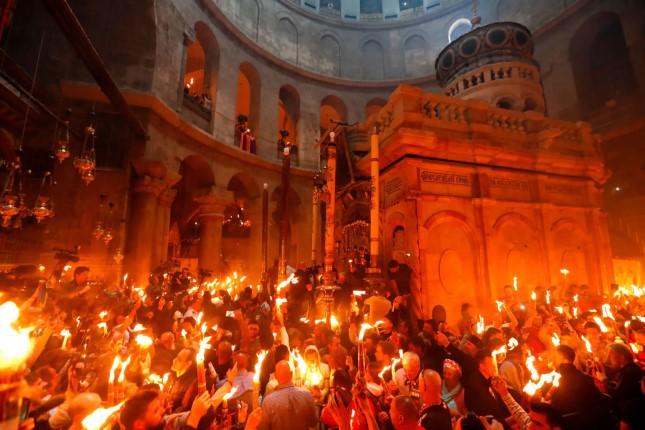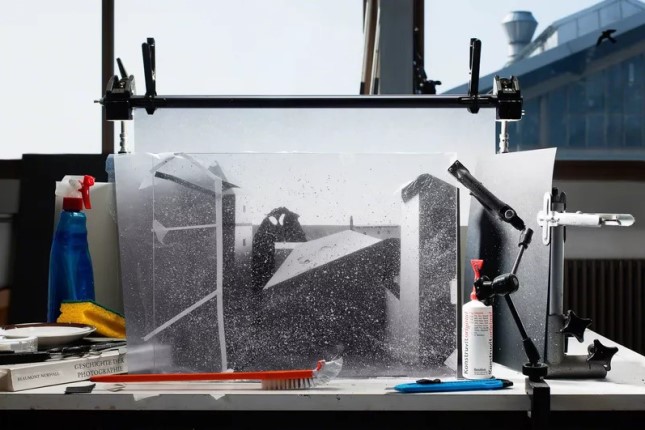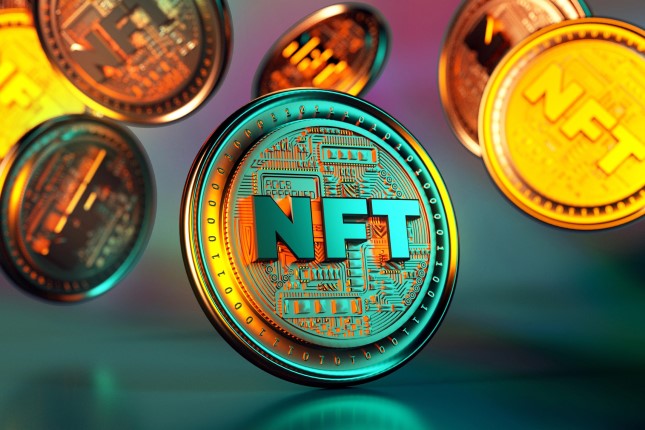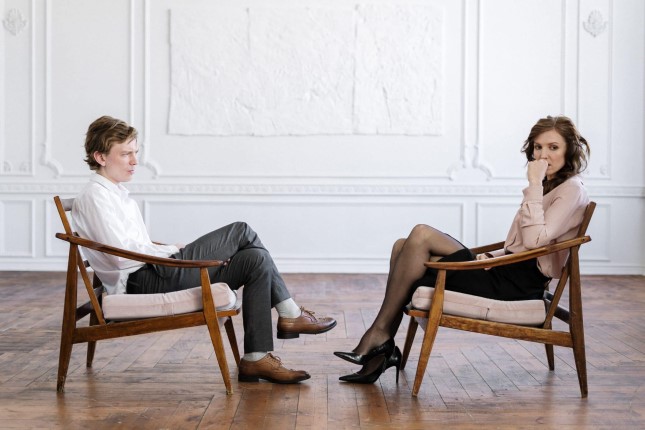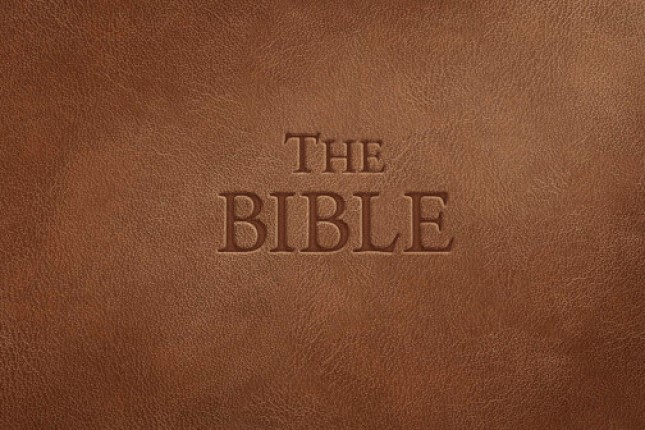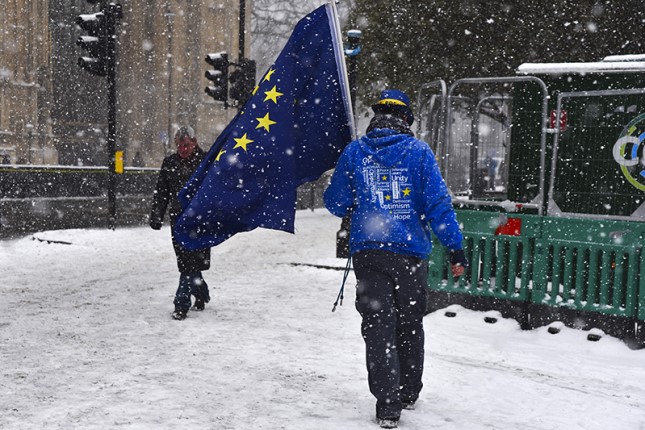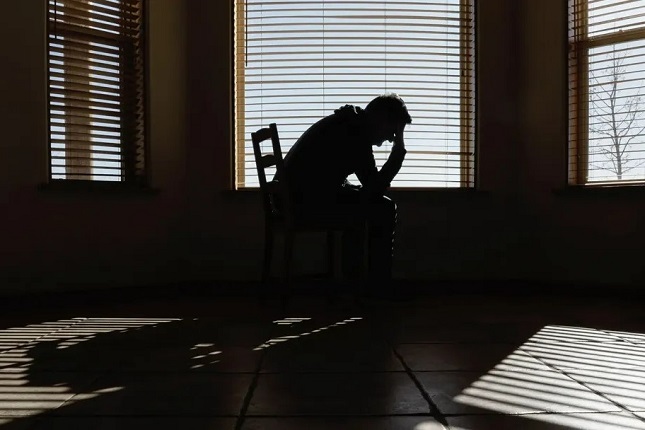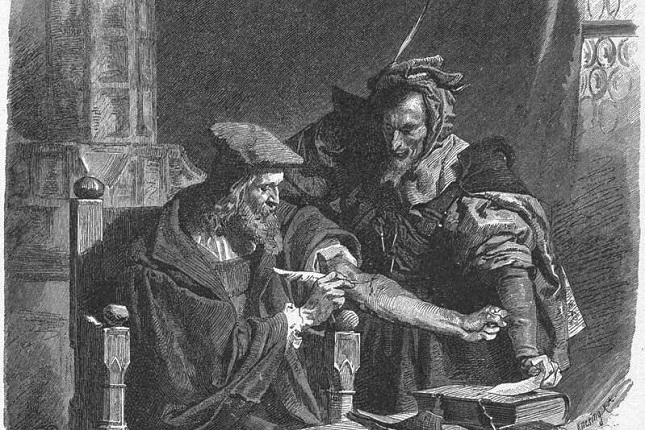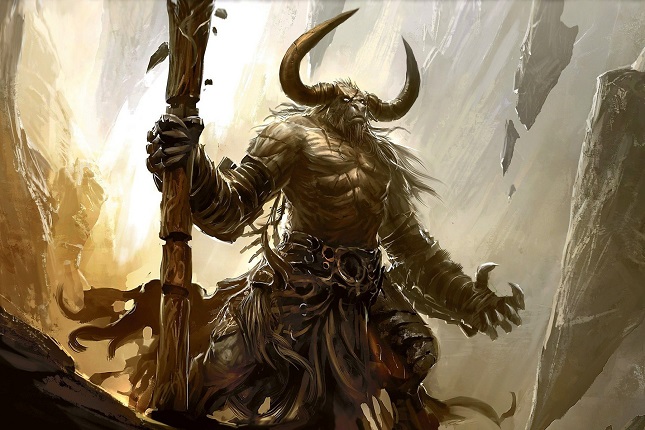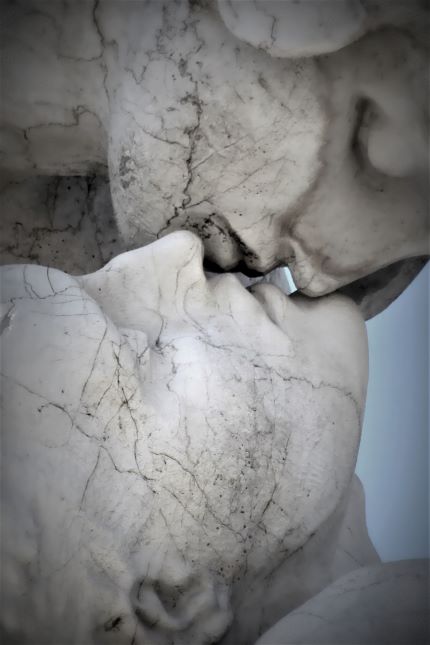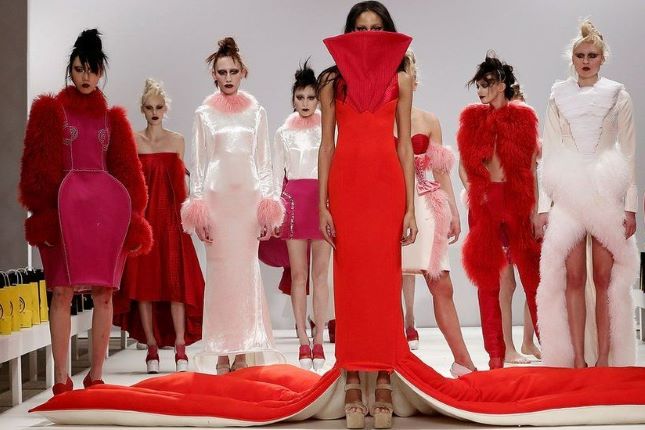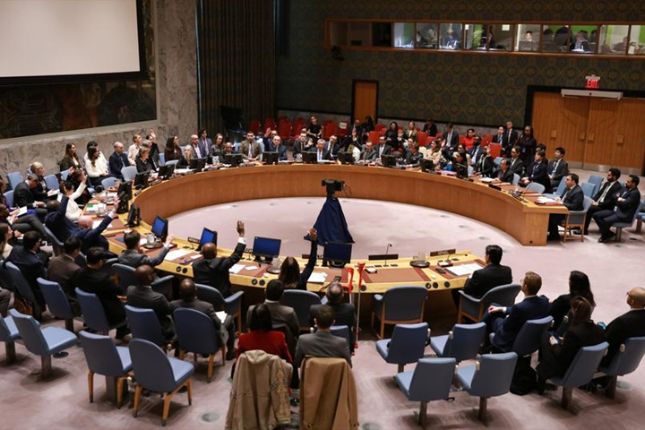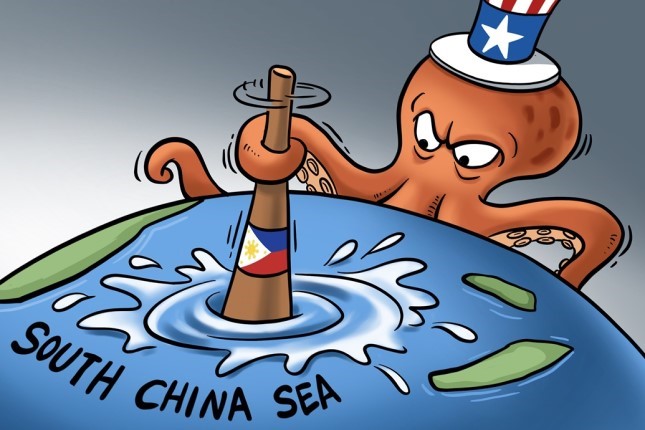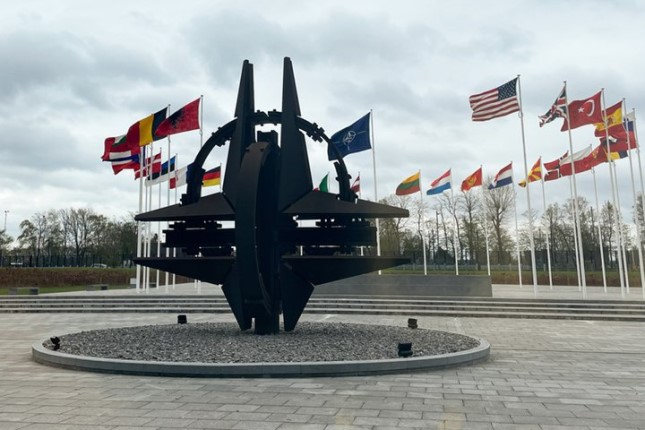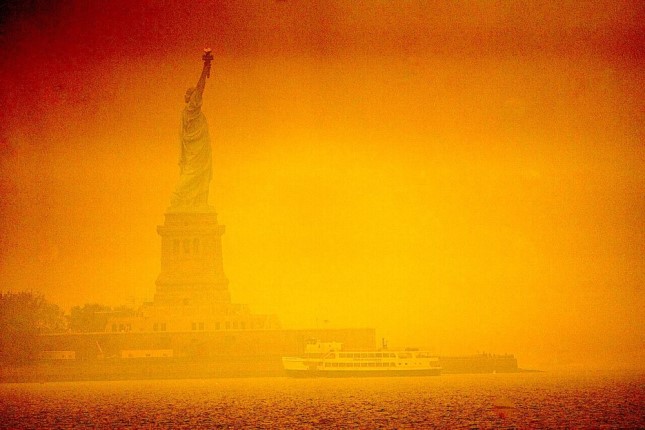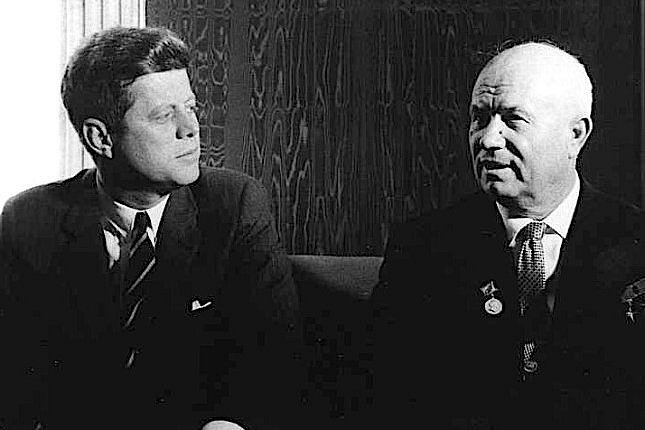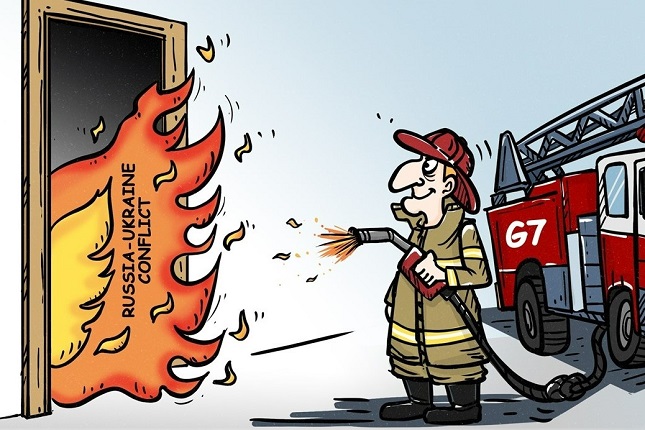Lithuania has published a book, The Way to Victory, about the war in Ukraine, written in the genre of the "graphic novel", or comic strip. This genre, which became extremely popular in the United States and Japan in the last century, has now become a hit with young people in Central and Eastern Europe, so choosing it is quite natural. But the style of the newly published work is surprising.
The artist, who created the graphic novel, combines this kind of book's usual "superhero" aesthetic (both protagonists and antagonists are depicted as equally brutal and sexual) with an overtly vicious satirical caricature.
As one can easily guess from the very fact that the book was published in Lithuania, which has taken almost the most aggressive anti-Russian stance in the aforementioned conflict, the masculine, attractive "superheroes" are portrayed as Ukrainian soldiers. They have magnificent muscles and manly chins; they are tall, well-built, and generally look like "true Aryans" from Third Reich propaganda posters or athletes from Leni Riefenstahl's film Olympia.
"The Aryans" are clothed in super-modern equipment. It is drawn so carefully and with so much love, as if the comic book was produced as an advertisement for helmet and bulletproof vest manufacturers. The actions of the Ukrainian characters in the Lithuanian comic strip are dictated solely by the urge to protect fellow humans. In a word: superheroes. The picture is somewhat spoiled by the recognizable chevron on the sleeve − the emblem of the so-called "Azov battalion", which not only in Russia, but also in Europe, many considered and consider an extremist armed formation. However, in Lithuania, publication of such symbols is fine.
When it comes to the Russian characters, the picture changes dramatically. It's as if, instead of the Marvell universe, the reader has been transported to the pages of the Völkischer Beobachter in 1942 or 1943.
Nazi caricaturists consistently portrayed Soviet soldiers as either men with obvious signs of mental health problems or as some aggressive nomads, savages in oriental clothing, with slanted eyes burning with mad fire. Artists almost always gave distorted, hypertrophied, deliberately exaggerated Semitic features to the images of the Soviet army commissars – it was not a caricature of the enemy's political workers, but of the Jews as such.
It is clear and well-studied by post-war historians that this was the directive of the Nazi Party leadership for all the publications of the Third Reich: to paint Soviet people of different nationalities (Slavs, Jews, Central Asians) with all the colours of the chauvinist palette. This incited hatred in the Germans not only of the enemy's military, but also of all people declared by the Nazis to be "inferior" on racial or genetic grounds.
In 2023, Lithuanian artists are not far behind their "colleagues" from Nazi Germany. Their comic strip depicts Russian soldiers as dwarves, orcs from Tolkien's fantasy, and stunted freaks. They are drawn in strange clothes, suspiciously reminiscent of prison jackets and pants tucked into rubber boots or even some sort of bast shoes wrapped in clothes. They do not have any military paraphernalia except old-fashioned helmets and Kalashnikov assault rifles.
But most importantly, their actions are portrayed as distant not only from the holy war for the abstract ideals of Good or at least Evil, but also from any war or military action at all. The artist gives a long, savoury interpretation of the fake story of Russian military looting in Ukrainian cities, where Russians allegedly stole washing machines and women's underwear, which was spread all over the Ukrainian and Western media and social networks.
Further in the course of the narration, the washing machine stolen by the "Russians" is sent to the village to the relatives of the "looter" on a cart drawn by skinny nags: presumably, there is no other transport in Russia. Portraits of Lenin and Stalin hang in the house of the "Russians" (an obvious reference to the "communist threat" and the era of World War II). The wife of the "Russian" and their children, chauvinistically depicted with clear signs of mental issues, do not know what to do with this machine, because they allegedly have never seen anything like that in their life.
Anyone with an aversion to chauvinism and anti-Semitism has the most unpleasant associations in this propaganda comic strip with the images of "Russians", whom the author has depicted exactly like the "commissars" in the Nazi newspaper. They all have distinctive huge, hooked noses and slanted eyes. The creators of the "graphic novel" had once seen too many propaganda fascist cartoons and were inspired in their own work not only by "superhero" comic strips, but also by the anti-Semitic scrawls of the Third Reich.
This, by the way, is quite typical of Lithuania, which both before and during World War II had its vivid traditions of the most heinous anti-Semitism. Hundreds of Lithuanians collaborated with the Nazis, assisted them in creating ghettos on their territory, and even personally participated in the massacres of Jews of all ages, including small children.
Perhaps, by drawing their "graphic novel" the propaganda artists wanted to demonstrate solidarity with Ukrainians. But in the end, they proved to be worthy heirs of the Nazi cartoonists with their manipulative, tendentious, and chauvinistic visual techniques.


